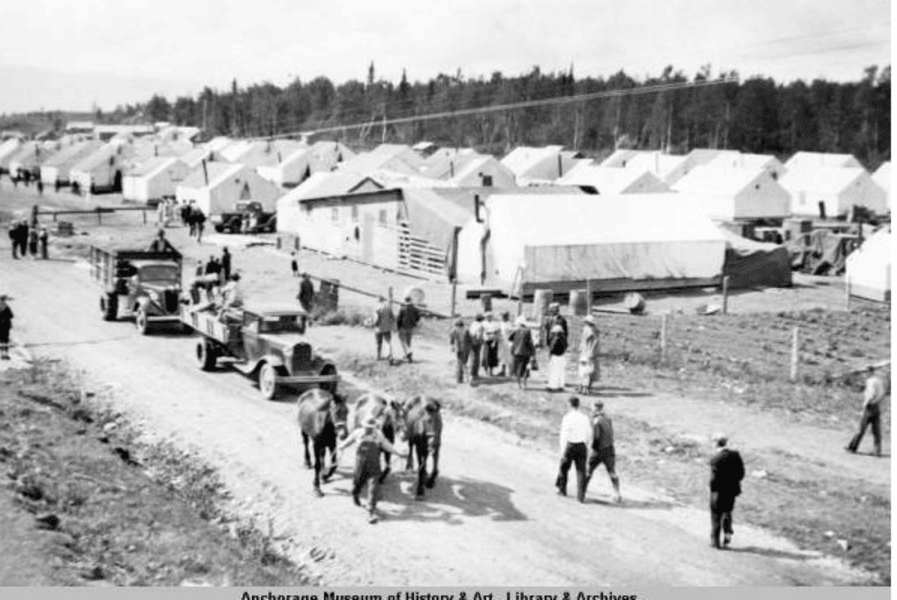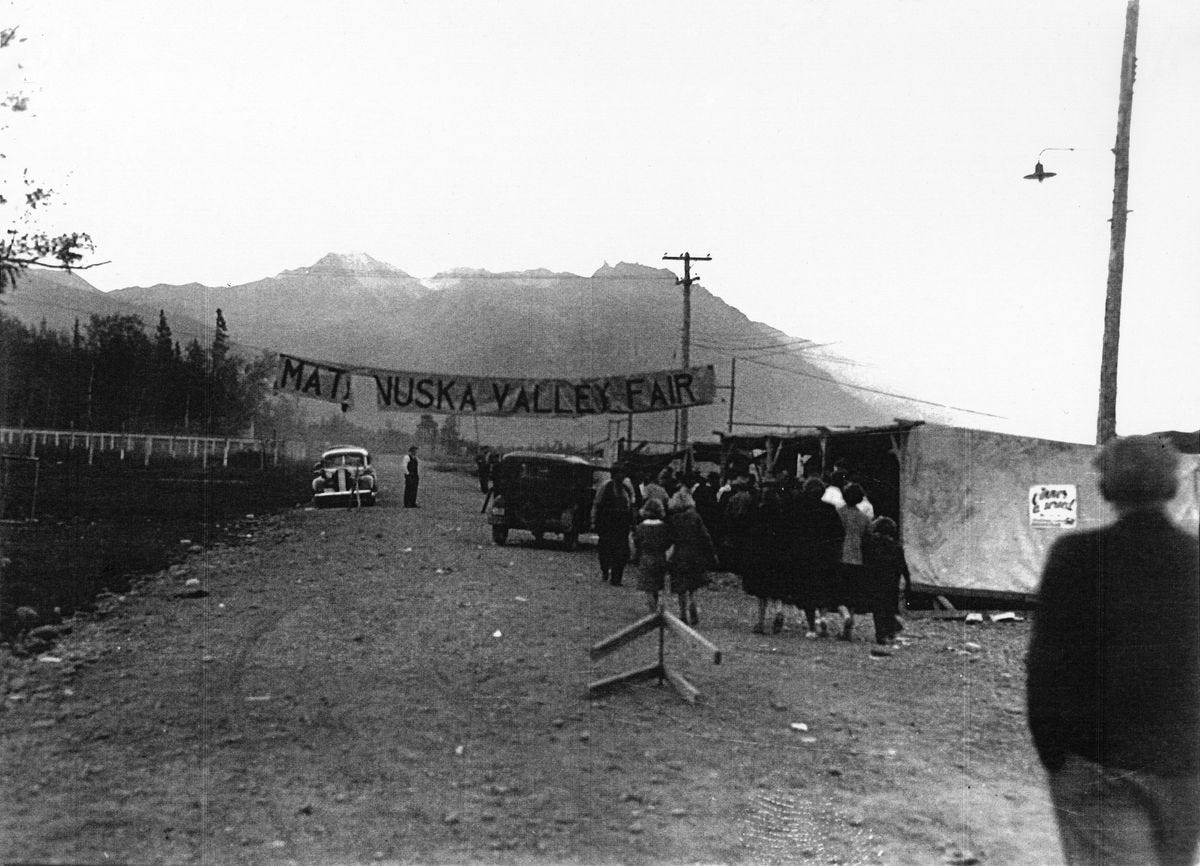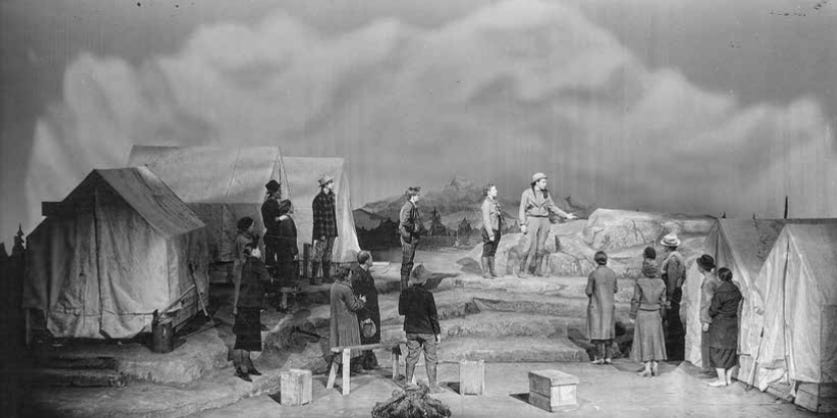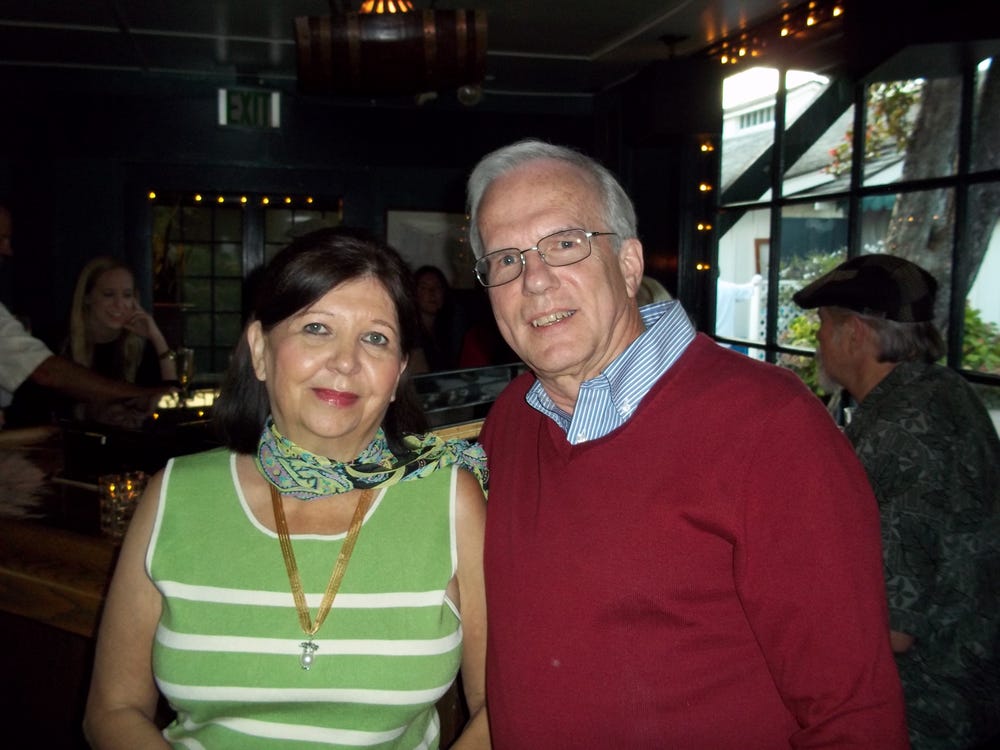The Great Alaska Experiment
Creation of the Matanuska Valley Colony.
In the photo above is the Matanuska Valley Colony in 1935.
They came from Minnesota, Wisconsin, and Michigan for the promise of a new life in a faraway place called Alaska.
The year was 1935. America was struggling with the Great Depression and drought.
200 families were chosen to make an incredible journey to Alaska’s Matanuska Valley, located about 35 miles from Anchorage.
Many of the families were not experienced farmers.
The Long Journey
They traveled by train to the west coast of the United States, then by ship to Alaska.
At the end of their long journey, each family received a 40-acre tract of land, housing, and supplies in a federally funded resettlement experiment. It was President Franklin Roosevelt’s New Deal.
It was only the beginning of their journey, but it was a fresh start.
The Nearly Forgotten 400
Transient workers were chosen from California and the state of Washington to go up to Alaska ahead of the 200 colonists to clear some land and put up tents for the new arrivals.
These workers would also stay on to build homes for the colony.
Celebrations
When the colonists finally arrived in Anchorage, the 200 families were given a warm welcome.
The town declared the day a holiday. Large, happy crowds greeted the 200.
Anchorage was decorated with flags, and there were bands playing.
The weary travelers were greeted with receptions and a dinner at the Anchorage community hall.
Newspapers Across the U.S.
Headlines called the 200 “Alaskan Pioneers.”
Yes, You Can Share This Edition
And when you do, your friends and family will be so happy that they will give you a one-month, all-expenses-paid vacation to any place in the world… well, it could happen.
What the Colonists Found
Upon their arrival in the Matanuska Valley, the 200 families found rows of tents for them to live in.
Each tent was five feet tall and included a stove and cots for a family of 5 or less. Larger families had to double up.
Here’s what an anonymous colony housewife had to say:
“Our tents are 16 X 20 - a floor made of rough lumber about 12 inches wide with cracks of half an inch or more between boards.
The stoves look good, if you don’t use them - they are not successful bakers… it is difficult to keep clean, as it is such a dusty country.”
The 200 spent the first few months living in tents while their homes were being built.
Farmland
To begin with, farmland for the colonists to work was selected by drawing lots.
A Real Home
To get the 200 families out of their tents before the approach of the Alaskan winter, each family had a home built for them.
The homes included a barn, chicken house, brooder coop, well house, a shed, and an outhouse.
Starting to Look Like Home
By the summer of 1936, the Matanuska Colony was almost complete.
The new settlement had a hospital, school, warehouse, chicken hatchery, creamery, railroad depot, and trading post. Four churches soon became part of the colony.
A Complicated School System
200 families meant plenty of children of all ages.
Since there wasn’t one school for all the children, the colony put together a patchwork of solutions.
The Alaska Railroad donated a railroad car that was used for the first and second grades. A traveling teacher taught classes in a barn, and some students had to attend school in the nearby town of Wasilla and other locations.
Life in the Colony was Challenging
Of the original 200 families, some decided that the Matanuska Colony wasn’t for them, so they returned to the “lower 48.” A few families came down with medical issues, causing them to leave as well.
Let’s Have Some Fun
When the community center was built, it became the heart of the Matanuska Colony.
When a school was built, the colony held dances and holiday parties in the school gym.
Social clubs were formed, including 4-H and the Grange. Those groups met in the community center.
At one point, a University of Alaska instructor taught courses in weaving, canning, sewing, and other homemaking skills.
And a colony gift shop sold items made by colonists.
The First Fair
In the photo above is the first fair in 1936.
In 1936 an excited Matanuska Colony put together the valley’s first annual fair.
The fair would go on to become the Alaska State Fair.
Because of the Colony
The Matanuska Valley became a major agricultural center for Alaska.
And the nearby town of Palmer became an economic hub.
200 Were Chosen
In 1936, a Broadway play titled “200 Were Chosen” ran for 35 performances in November and December of that year. The play brought the Matanuska Colony adventure to life for America.
Today
The Matanuska Colony is remembered in a museum housed in an original 1935 farmhouse at 316 East Elmwood Avenue in Palmer, Alaska.
In addition, many of the original buildings are now listed on the National Register of Historic Places.
You can also visit some of these buildings during the Alaska State Fair, held each year in Palmer.
BONUS
Do you want to know more?
Take a look at The Matanuska Colony by the National Park Service and discover.
From Our North Stars (that’s you)
From our look at The First and Last in Alaska.
Joe remembers:
“We drove out of Anchorage January 1, 1959. We spent the first night on the road at the Parker House in Tok. In their luxury room, the one with the attached bath.”
Connect with Mike and Mary
This look at the history of the Matanuska Colony was fascinating.
Do you have a comment?
You can also reply to this email.
And you can Contact Us right here.
Until Next Time
Mike and Mary
Alaska Stories






